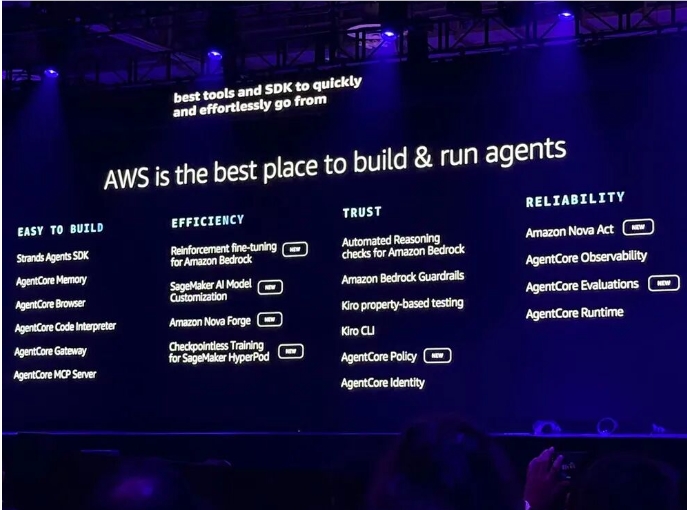A large-scale outage occurred on Amazon Web Services (AWS) in the U.S. Eastern Time zone early today, causing multiple platforms that rely on the cloud service to be unable to operate normally for extended periods. The affected well-known services include Amazon's own website, Alexa, Snapchat, Fortnite, ChatGPT, Epic Games Store, and Epic Online Services, affecting a large number of users' work and entertainment activities.
According to the AWS status page, the incident was first reported at 3:11 AM U.S. Eastern Time, with the main issue concentrated in the US-EAST-1 region. Initially, the AWS team attributed the problem to an underlying DNS (Domain Name System) failure. In an update at 12:13 PM, they clearly stated that "the issue originated from the EC2 internal network" and mentioned that the incident had been largely resolved. As of the time of this report, some platforms such as Fortnite and the Epic Games Store have returned to normal, but some services are still not fully restored.

In addition to the aforementioned well-known platforms, this outage also affected enterprise services such as Airtable, Canva, Zapier, and the McDonald's application. A large number of users expressed dissatisfaction with the service interruption on social media, highlighting the high dependence of modern business on cloud service infrastructure.
Notably, the US-EAST-1 region is not the first to experience a large-scale outage. This region has experienced similar incidents in 2020, 2021, and 2023, leading to many platforms being unable to operate normally. This historical record has raised ongoing concerns about the reliability of this region and the resilience of AWS infrastructure.
From a technical perspective, US-EAST-1, one of the earliest regions established by AWS, hosts a large number of traditional and emerging services. Its importance means that any failure can lead to widespread chain reactions. The process of this incident, from a DNS issue to ultimately identifying it as an EC2 internal network failure, reflects the complexity of troubleshooting large-scale cloud infrastructure failures.
This outage once again highlights the risks of relying on a single cloud region. Although AWS offers multi-region deployment architecture, many enterprises, due to cost, complexity, or historical reasons, still concentrate critical services in a single region. Due to its historical significance and rich service options, US-EAST-1 has become the preferred region for many companies, but this also means that any failure in this region can have a broader impact.
From the perspective of the impact range, the fact that AI services like ChatGPT were affected shows that even the most cutting-edge technological applications depend on the stability of basic cloud services. Such service interruptions not only affect individual users but may also interrupt numerous enterprises' attempts to integrate AI into their business processes, highlighting the importance of cloud service reliability for emerging technology applications.
For enterprises that rely on AWS, this incident provides an opportunity to re-evaluate disaster recovery strategies. Although multi-region deployment increases costs and complexity, considering the potential losses from downtime—such as revenue loss, user attrition, and damage to brand reputation—this investment may be necessary.
AWS, as the world's largest cloud service provider, has the broadest impact from its outages. Although the company has a strong technical team and a mature incident response process, the repeated record of outages in the US-EAST-1 region indicates that even industry leaders cannot completely avoid large-scale infrastructure failures. This may be related to the region's historical architecture, service density, and technical debt.
From the user experience perspective, such outages can cause long-term damage to brand image. Although technical failures are difficult to avoid entirely, users often judge a platform's reliability based on its availability. For consumer-facing applications like Snapchat and Fortnite, which prioritize user experience, prolonged service disruptions could lead to user attrition to competitor platforms.
Amazon has not yet released a detailed report on the root cause of this outage or subsequent improvement measures. According to industry practice, after major incidents, a post-incident review (Post-Incident Review) is typically published, detailing the cause of the incident, the scope of impact, the resolution process, and preventive measures. Such reports are crucial for customers to assess risks and adjust their architectures.
In summary, this large-scale AWS outage once again reminds us of the critical role cloud services play in the modern digital economy and the systemic risks that single points of failure can bring. For enterprises, how to find a balance between cost, complexity, and reliability and develop appropriate multi-cloud or multi-region strategies remains an important topic that requires continuous attention. For cloud service providers, how to improve infrastructure resilience, reduce recovery time from failures, and provide more transparent status information is also key to maintaining customer trust.









